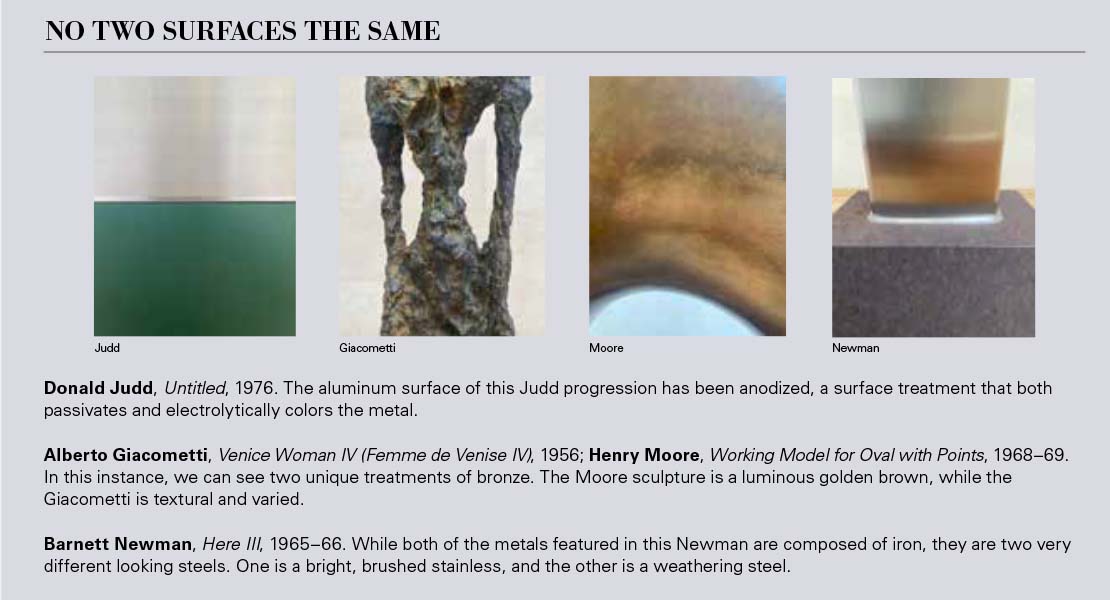While at a museum, we are asked to keep our curious hands away from the artwork. I have managed to sidestep this to some degree by becoming a conservator at the Nasher, where I have the luxury of handling, cleaning, and even treating all types of materials. Even so, there are surfaces I only handle when wearing gloves. This understanding has come from training and experience; the most impactful lessons have come from seeing damage done by unnoticed fingerprints that with time have etched into delicate metal surfaces due to an interaction with the oils a gloveless hand can leave behind. The terms “delicate” and “metal” may seem contradictory, but in thinking about the sounding sculptures by Harry Bertoia, we can explore the challenges that make these words more synonymous.
The sounding sculptures are not only a conservation challenge due to their materiality, but also because of their purpose: to be touched so that the elements may strike against one another and resonate. As a caretaker of artwork, my preference is to limit touching any materials, especially uncoated metal. However, caretaking comes with acknowledging the inherent intent of an artwork. For these sculptures, the material is selected based on its ability to produce sound; the state of the surface is a distant second to this aspect. For this reason, many of these works exist with varying levels of dark patina, a result of decades of handling and thereby sound-making.
It was sound and media artist Olivia Block who reminded me of Bertoia’s knowledgeable selection of metal alloys that would resonate upon interaction. Alloys like bronze and brass are fairly commonplace in collections; however, his experimentation with beryllium copper, Monel (a nickel and copper-rich alloy), and the trademarked Inconel (a nickel-chromium alloy), to name a few, makes for exciting potential conservation research.
If you imagine a metal artwork featured in a museum, you might think of the resilient copper-tin alloy bronze. Due to chemical patinas, and a wax coating if displayed outdoors, bronze artworks remain relatively stable in the right environment. Brass is a copper-zinc alloy often found in its raw state in modern art collections. The bright color of untreated brass has been favored by artists including Arp, Brancusi, and Judd, but unlike bronze, it is difficult to maintain because of its tendency to tarnish (i.e., oxidize, corrode, develop natural patina).
The tendency of an alloy to tarnish can correspond with the conductivity of the predominant metal. In its pure form, copper is highly conductive (think of electrical wiring in your home) and will react with pollutants in the atmosphere to develop a colorful patina. Unlike the patina chemically applied to a bronze, this natural patina is not as stable and will continue to change.
In addition to conducting electricity, some copper alloys successfully conduct sound. There is a reason the horn section of an orchestra is also referred to as the brass section. While copper loses some conductivity with the addition of other components, the zinc in brass offers strength necessary for forming instruments. A similar correlation can be found in Bertoia’s use of beryllium copper; the addition of beryllium allows for the production of stronger, corrosion-resistant copper alloy wire, without sacrificing its ability to conduct sound.

Claire Taggart is conservator at the Nasher Sculpture Center.